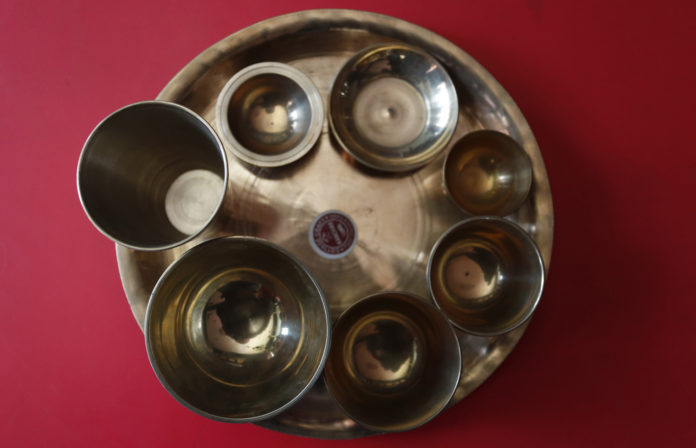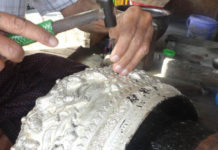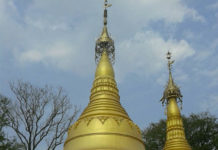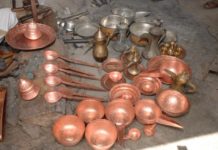Kans Dakeyan, or beaten dishes, are products like dinner sets or singing bowls made by hammering an alloy of copper (80%) and tin (20%).
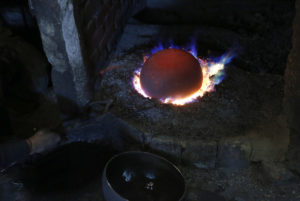
Kans is a local name for the alloy. It is also known locally as chares. These products are made by a specific Newari caste, the Kansakar, which literally means artists working on kans. Only the Kansakars produced beaten dishes until 1974. Since 1985/86, Mulmis, also from the Newari community, have started producing kans products. Though there are around 50 small factories who claim themselves as kans producers, only two factories, operated by Tamrakar (artists preparing copper products), produce real kans products at present.
The kans products are made by melting copper and tin in the required ratio depending on the product’s style, size and weight. They are molded into a given shape, heated in the furnace and hammered till the desired shape is made. Artists add colors when required.
Kans utensils have been in use since the Lichhavi period (1150 BCE-750 CE). These products were, and are still, used as utensils mainly to serve food with a belief that having food or water in it supplements the amount of copper our body needs daily. Kansa utensils are also used to serve breastfeeding mothers for the utensils are good conductor and keeps food warm for longer. They are used during religious ceremony and even during death rituals.
Kans utensils are specially found in galleries where kans utensils and singing bowls are showcased. This includes the Utensils shop at Ason—the oldest area of Kathmandu Valley where mostly Newar community lives. Singing bowls are found in Thamel – a tourist destination for the bowls are specially used in healing and meditation and is popularly known as Himalayan bowls or Tibetan bowls as well.


